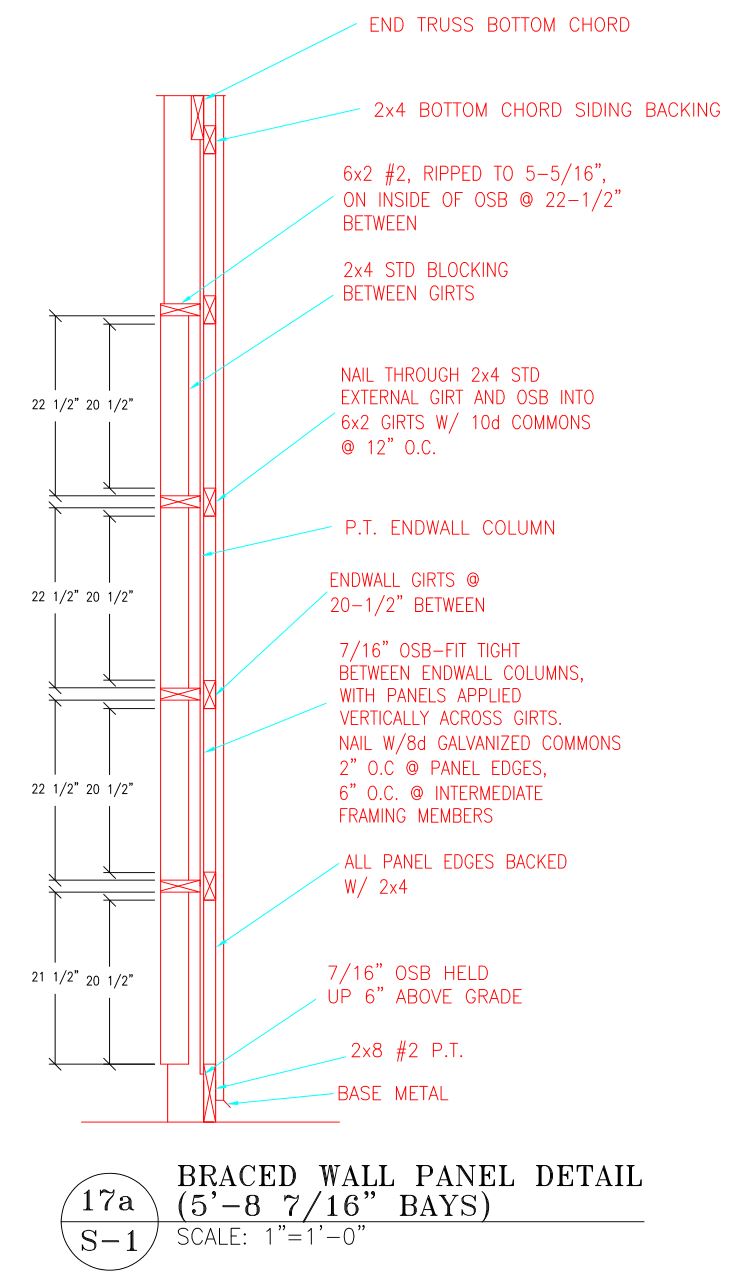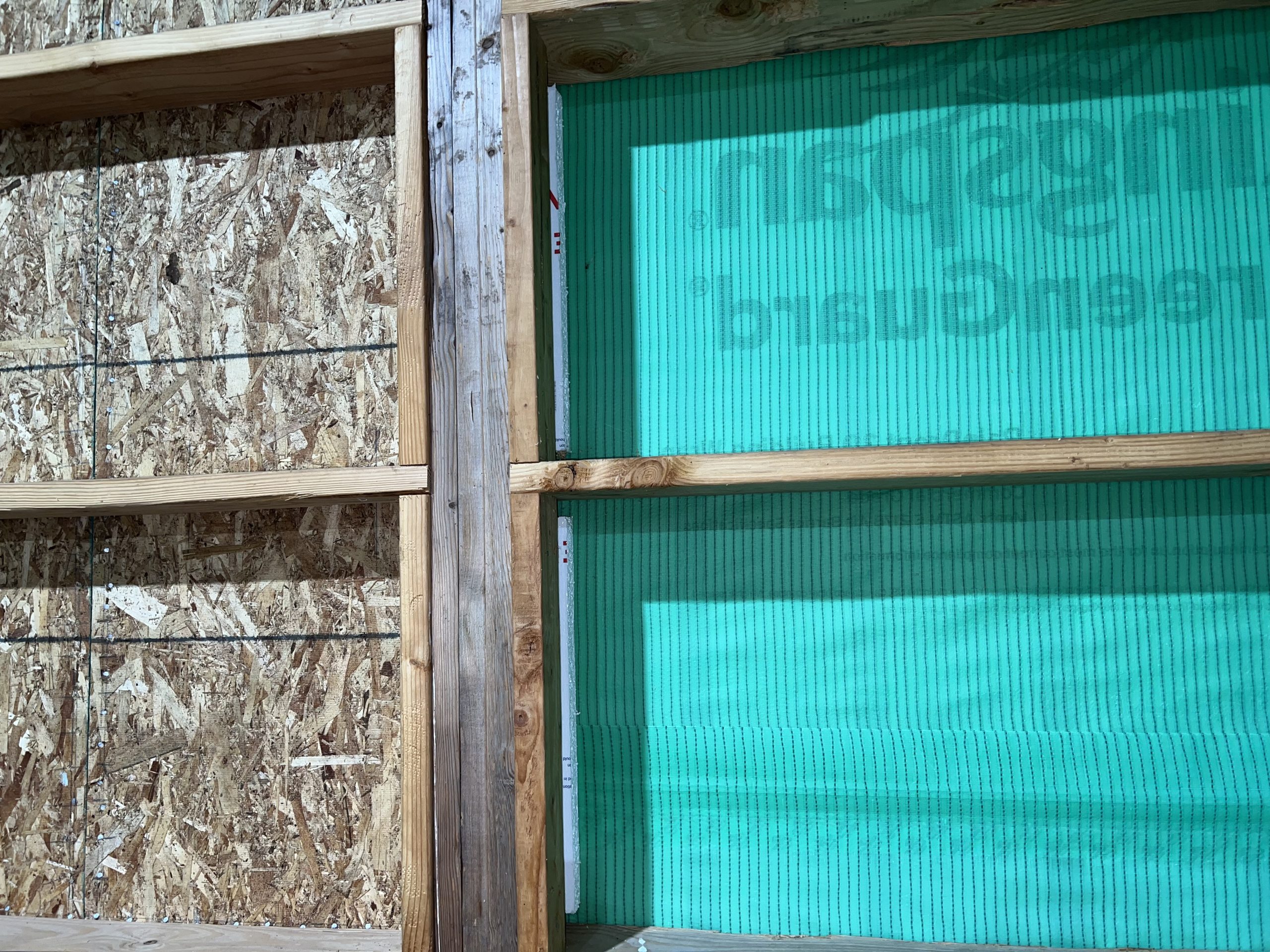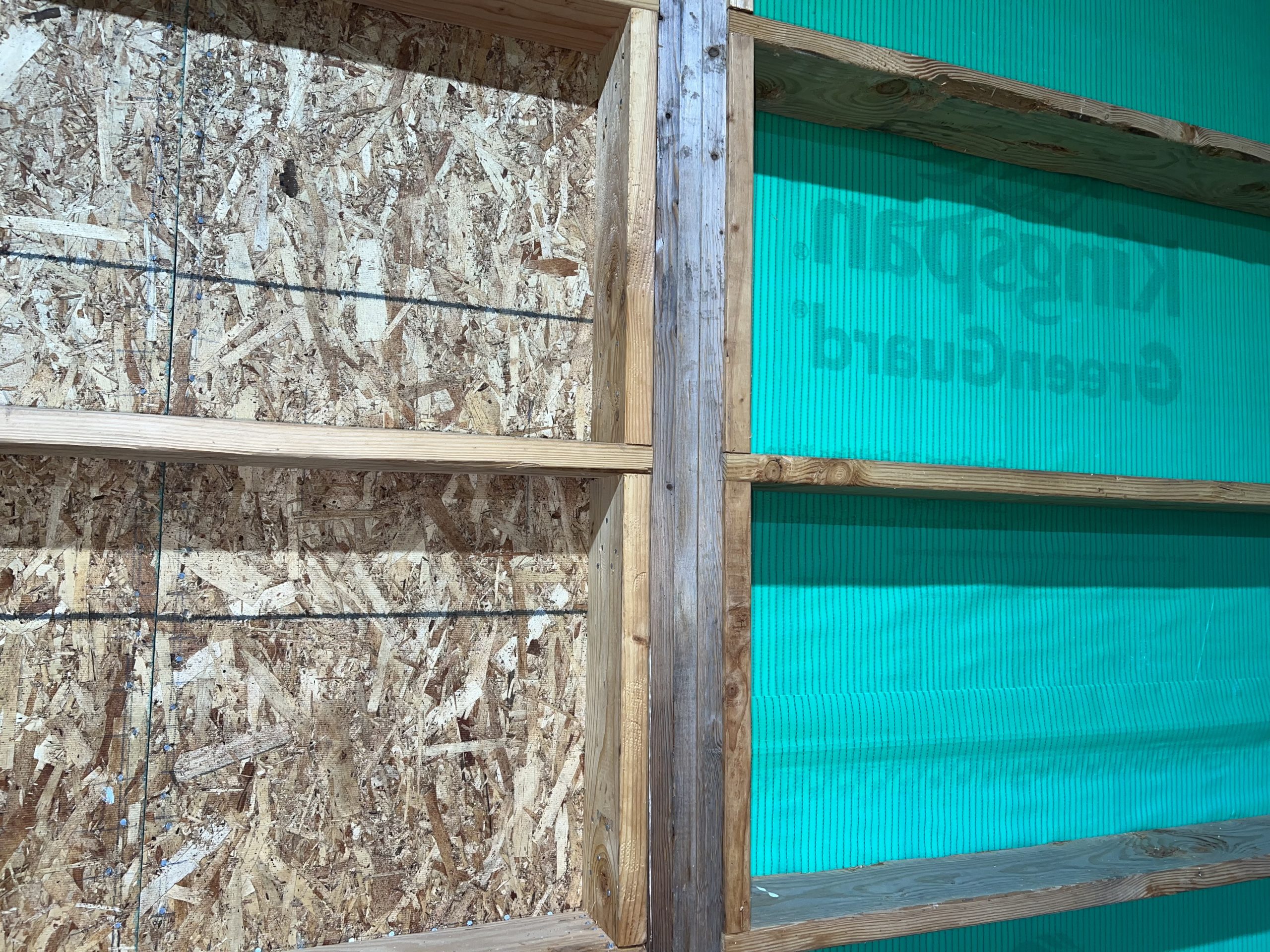Drilling Electrical Holes Through Glu-laminated Post Frame Building Columns
Reader and Hansen Pole Buildings DIY client AARON in SALEM writes:
“I am trying to find the best way to run in wall wires (6/3, 8/3 & 10/2 romex) past columns on the “braced wall panel” bays in my building. My building has a 20′ eave height and the end columns are glulams that measure 4-1/8″ x 5-3/8″. The gap that would normally be behind the post is filled with OSB, blocking and a lot of nails. Going all the way to ceiling and back down is an option, but in this case would use lots and lots of extra wire. probably more than 25′ to go up and back down once, so this could really add up with several runs of wire. it also adds a bit of voltage drop. I looked into drilling holes in the glulam columns and if I am reading things correctly, the max hole size would be 0.5375″ based on info from here: https://www.constructionspecifier.com/a-guide-to-field-notching-and-drilling-lvl-and-glulam/2/ (the exception for 25mm or smaller holes doesn’t apply since my columns are under 7.25″). I believe this would be too small (I would need a 1″ hole min for the 6/3 wire). It would barely be sufficient for a single 12/2. I could attempt to drill a curved channel behind the column through the OSB & 2×4 blocking and maybe insert a piece of 1″ emt, but I would likely hit multiple nails. I can’t think a type of bit or tool that would do this gracefully. I think this is likely the best solution, any advice on drilling through? See pictures and braced wall panel detail attached. Thanks for your help!”
Untreated “uppers” of your glu-laminated building columns are a product of 1650msr lumber. MSR grades must meet visual requirements of #2 materials. As such you can safely drill holes through 5-3/8″ faces up to 1-1/4″ diameter spaced two feet apart, within lumber grading rules. Building Codes do actually allow for even larger holes, however we would not recommend doing so. For extended reading on this subject: https://www.hansenpolebuildings.com/2013/08/electrical-holes/
Photos:









